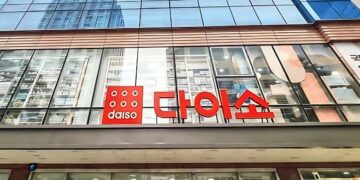Last Updated on 6 months by admin
The bustling streets of Seoul are just a part of the city’s dynamic landscape. Beneath the surface lies an expansive network of underground spaces that seamlessly blend commerce, healthcare, and daily conveniences. These subterranean hubs in Seoul offer shelter from the elements and a unique urban experience. But, along with all the conveniences, they also present challenges that warrant attention.
Seoul’s Subterranean Shopping Haven – The GOTO Mall
Located beneath the Express Bus Terminal Station, Goto Mall stands as the largest underground shopping center in Seoul. Spanning approximately 880 meters, this subterranean corridor houses over 600 stores offering a diverse array of products. You can find trendy clothing and accessories, home décor, and fresh flowers. The mall’s strategic location and affordable prices make it a favorite among both locals and tourists.
Location: Situated beneath Express Bus Terminal Station
While Goto Mall is a prominent example, Seoul boasts several other significant underground shopping centers. Some of the others you can explore include Starfield COEX Mall, Myeongdong Underground Shopping Center, to name a few.
The Multifaceted Underground Experience
The underground spaces in Seoul are not just a place for shopping malls. Many underground Seoul subway stations have mdeical clinics, pharmacies, unstaffed retail outlets, and even some amazing eating outlets.
Tourists coming from other countries usually have experienced underground shopping malls, but having all the other amenities is something unique to Seoul.
At many major subway stations across the capital, commuters can grab a meal, shop for groceries or even visit a clinic — without ever stepping above ground. Franchise restaurants and cafes are a common sight, often equipped with standing tables to accommodate the fast-paced lifestyle of Seoulites in transit.
Locals and tourists in most of the subway stations in Seoul offer everything underground. You can shop, grab a bite to eat, and get medical services without leaving the station.
Culinary Delights
You’ll often see franchise restaurants and cafes, with standing tables to fit the busy lifestyle of Seoulites on the go. There are even fruit vendors near key locations within the underground subway staions.
Healthcare Access
There are small clinics, inclduing dermatologists in the underground Seoul commercial spaces. Many subway stations are equipped with clinics and pharmacies, enhancing commuter convenience.
Retail Innovations
Uncrewed stores, such as 24-hour pet supply shops and print services, have become increasingly common, providing round-the-clock convenience. Seoul Metro says that the number of uncrewed stores in subway stations has been going up over time. In 2022, there were 15, but in 2023, that jumped to 28. Then, in September of last year, it went down to 27.
Rise of Underground Developments
The commercial spaces underground in Seoul started in the 1970s and 1980s. It was initiated because of the rapid urbanization and limited surface space. By using the underground areas, the city was able to reduce surface congestion while giving a much needed boost to commerce. This strategy has proven economically beneficial, with underground spaces becoming significant revenue sources for entities like Seoul Metro.
Safety Concerns Beneath the Surface
While there are many benefits and conveniences of underground facilities in Seoul, there are many safety concerns as well. Experts warn that extensive subterranean construction can disrupt natural groundwater flow and weaken soil integrity. It can impact ground stability, potentially leading to sinkholes.
Notably, a 20-meter-wide sinkhole in Seoul’s Myeongil-dong district resulted in a fatality, highlighting the risks associated with underground development.
Balancing Convenience with Caution
As Seoul continues to expand its underground infrastructure, balancing convenience with safety becomes paramount. Urban planners and engineers are urged to implement stringent construction practices and regular safety assessments to mitigate risks. Public awareness campaigns can also play a role in educating citizens about the potential hazards and safety protocols related to subterranean spaces.
Related Posts
2,856 total views, 4 views today

















